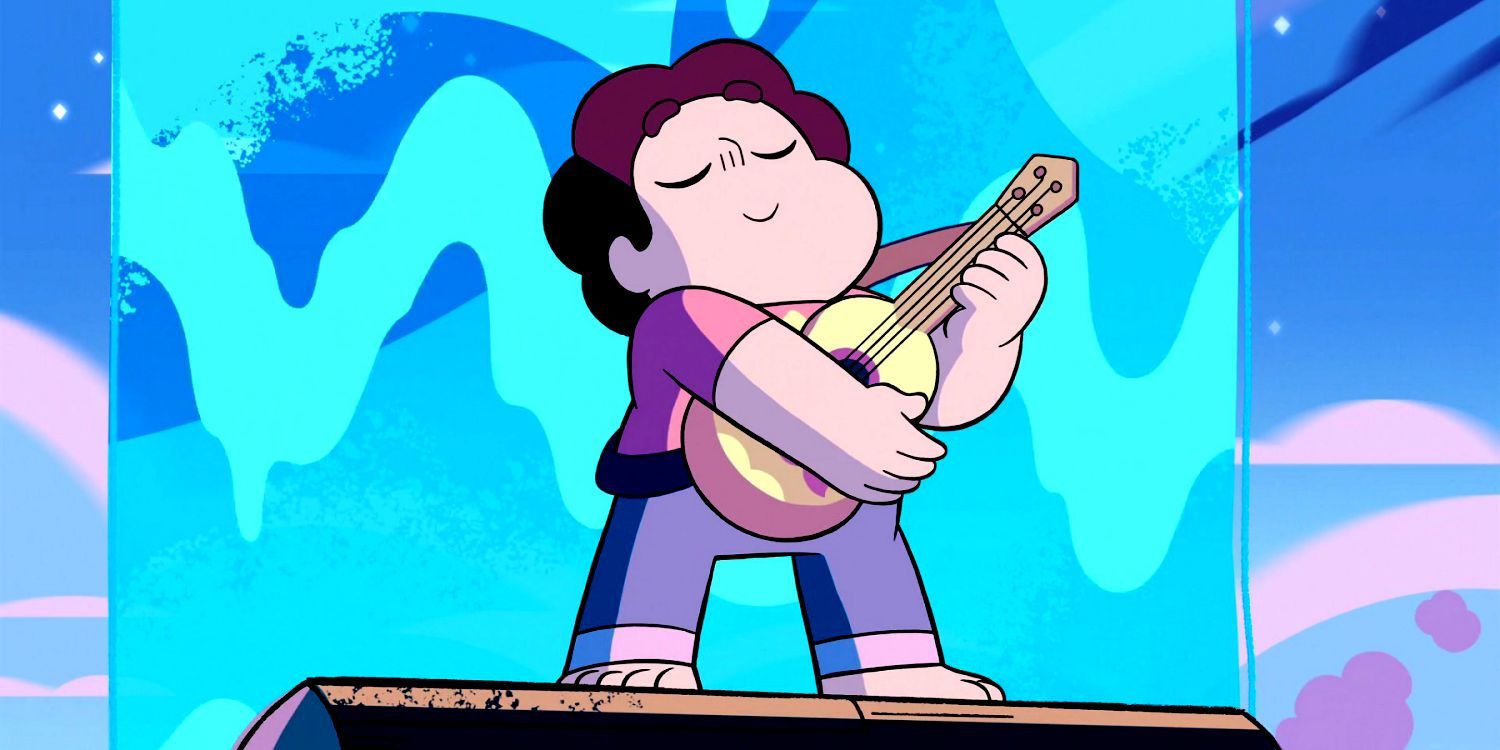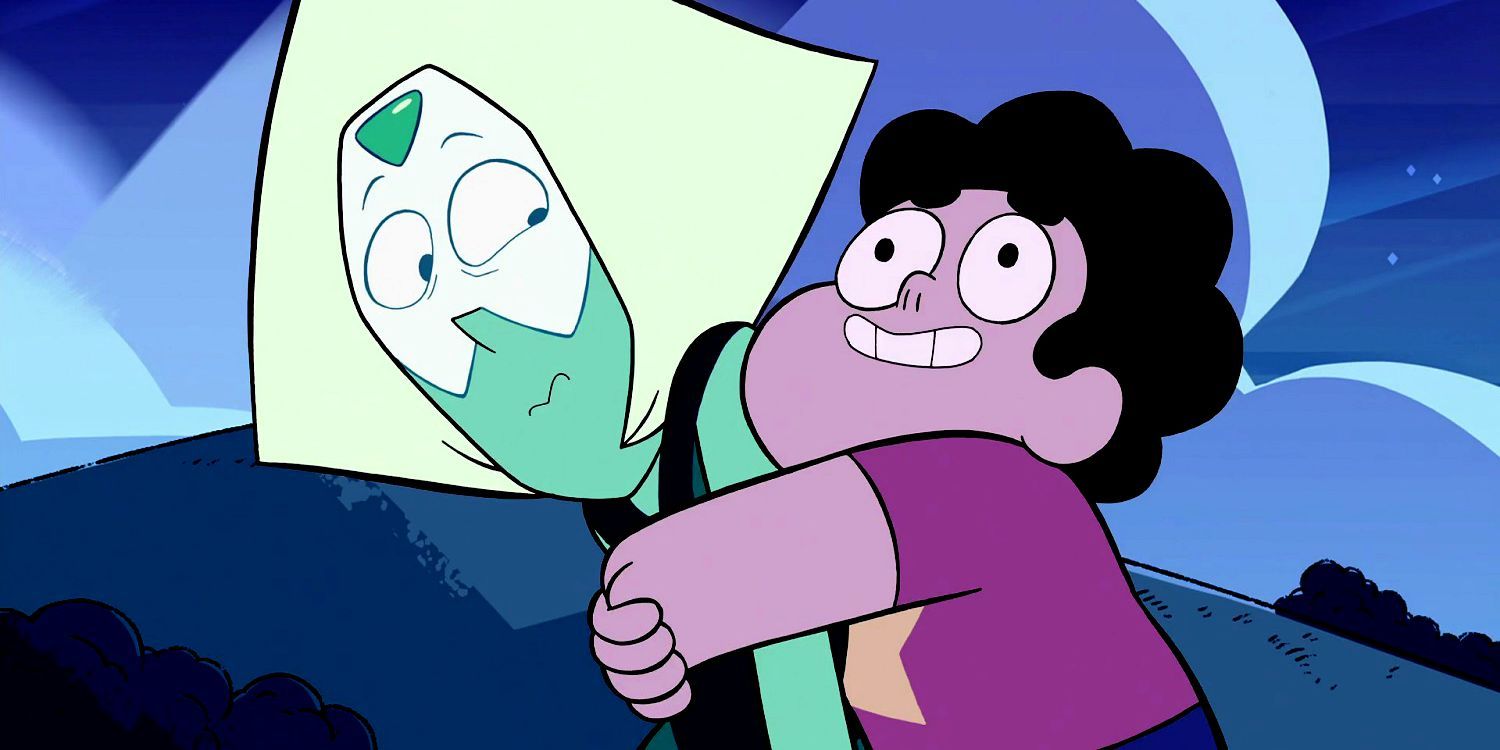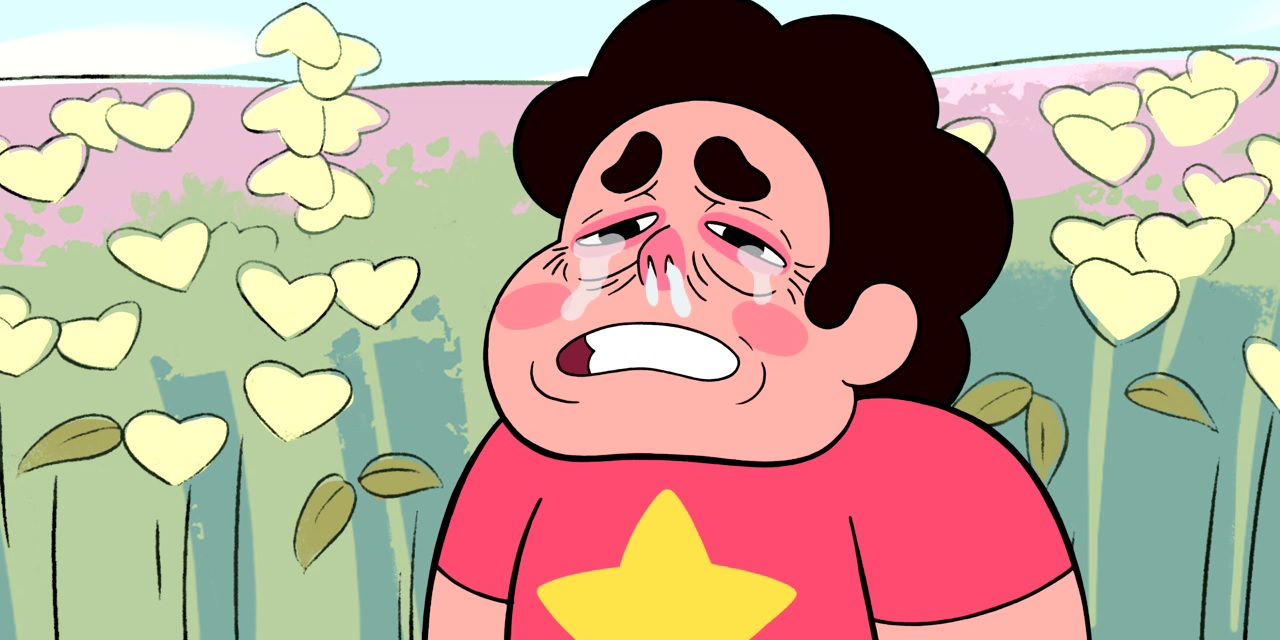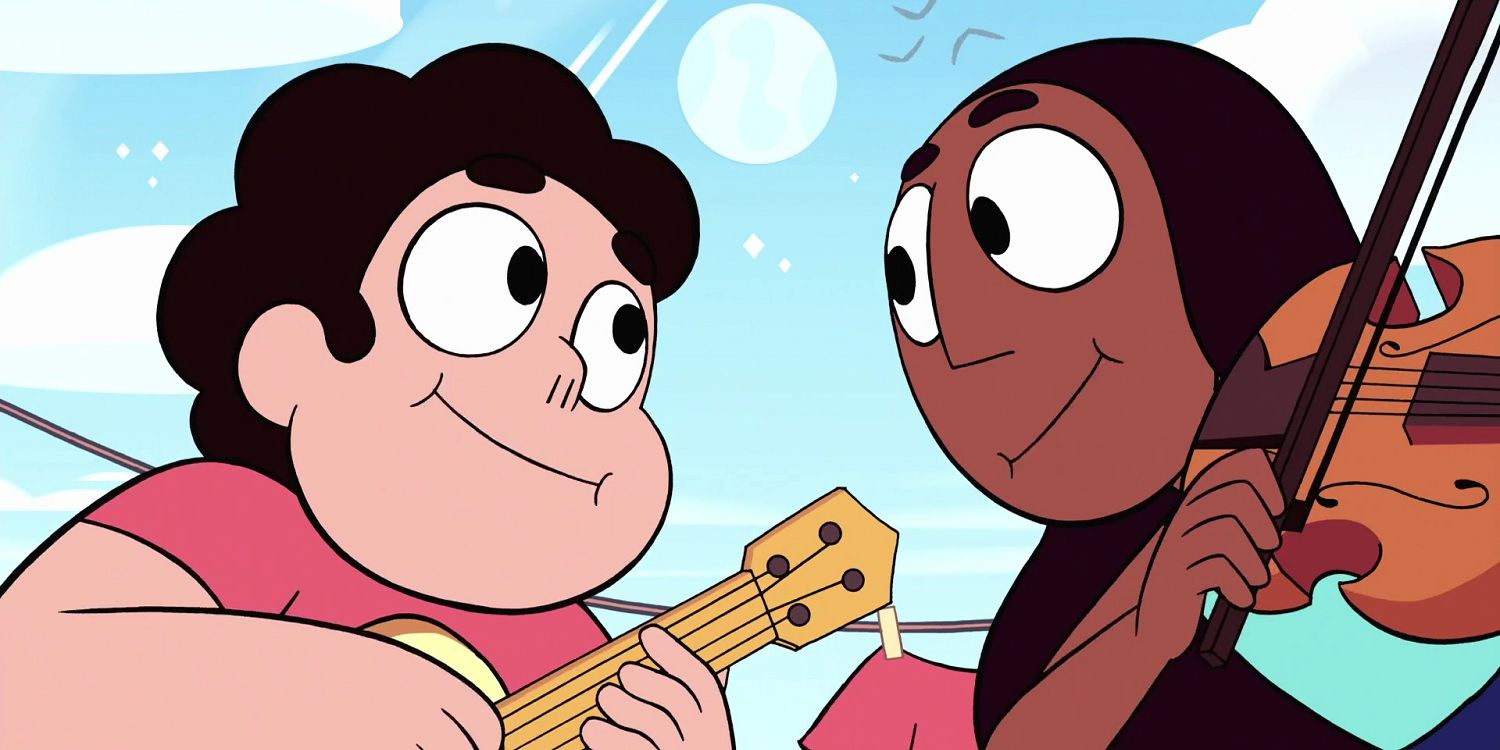Steven Universe, created by Rebecca Sugar (Adventure Time), is the animated fantasy and sci-fi adventure show with the biggest heart on television. Steven, his father, and his guardians – the Crystal Gems – live in Beach City, spending their time equally between saving the planet, singing wonderfully catchy songs about equality, love, and happiness, and still making time for all manner of ridiculous interactions with other town citizens. The show has a charm that perfectly balances the very happy-go-lucky cartoon aesthetic of the past, with fight sequences and action scenes that still feel oddly satisfying, as well as an updated syllabus on lessons that need learning in the world we live in today.
The show resonates with an extremely wide audience. As is also the the case with Adventure Time, you can find just as many fully-grown adult Steven Universe fans as you can children, along with every age in between. This cult-like dedication can be attributed to many things, but what's probably the most glaringly obvious is how great a job that this show does of accurately representing everyone. There are characters young and old, from all manners of racial backgrounds and different sexual identities to relate and connect to, on several levels. And most importantly, none of these things ever feel like the linchpin that makes these characters necessary for the story. Unlike many other series, both live-action and animated, none of them are defined by those things in ways that diminish dimension.
Although there is whimsy, and glitter, and magic on top, the layers beneath are often very strong physical manifestations of the human condition. Thematically, ideas about almost every difficult, unpleasant facet of life and behavior are covered in Steven Universe in a way that simplifies often-complicated matters. And in the midst of all this unpacking, it still manages to tell its own very beautifully written story for our entertainment. Let's take a closer look at the plot of this critically cartoon, and some of the reasons why Steven Universe connects with such a wide berth of viewers without losing its focus.
The Story Has Layers
Over the past four seasons, Rebecca Sugar's action fantasy cartoon has followed a story much older than its protagonist. The Crystal Gems are centuries-old beings from another planet, and as the story develops it becomes very clear why they are the only three remaining Gems on Earth. Pearl, Garnet, and Amethyst, as well as Steven's mother Rose Quartz, formed their own rebel alliance against the royalty of their home world, who intended to use the Earth as a place to mass produce other Gems, wiping out human life, and eventually using the planet as another base of operations in the galaxy.
As a viewer, we learn most of this through Steven's education on his mother's family history from the Crystal Gems. And because of the kid gloves they very often treat him with, it sometimes makes backstory and plot information a difficult thing to come by. As Steven becomes less concerned with ice cream and french fry crumbs and more curious about where he came from and what dangers he and the Gems are actually there to save the planet from, we see a shift in him.
He's still the same lovable boy that you meet in the very first episode, but there's also a wistfulness that only comes with experiences that change your worldview. In a very unique way, Steven's journey very much mirrors many of our transitions from make believe and pretend, to responsibility and consequences – but for him there's just more at stake. The perfect mix of fun side missions around town and the more central, and complicated, plot events bring a balance to every episode that make the show easily digestible as a whole.
Steven Redefines Boyhood on TV
Steven Universe is not the typical representation of a young boy protagonist that we've seen many times before. In fact, it could easily be argued that he's the most true depiction of how young boys actually behave when there are no boundaries or gender rules set for how a boy should act. Although his character isn't the smartest, like many young people, what Steven lacks in IQ he more than makes up for in EQ. He's not afraid to be vulnerable, or express emotions like love and sadness. He wears what he wants, with no concept of what is appropriate, like in "Sadie's Song" where he takes the stage in front of his entire town to perform a pop song in his friend's place donning a dress and a face full of make up.
Even the powers that come from being half crystal gem are not traditionally what we've come to expect from young male leads in animated stories. Steven's abilities are mostly defensive. He has a pink energy shield and his magic spit can heal wounds and other injuries. It's his best friend Connie who has the sword skills. All of these things make the character refreshing in a way that makes him feel more real, because there shouldn't be a check box of behaviors and skills that we identify as being masculine. And Steven is the perfect example of what one of those many identities look like without being so heavy handed that they feel forced in any way.
The Music Is A Character
The score and original songs you hear in episodes of Steven Universe deserve a lot of credit for setting the tone for the show. The music acts as a character itself, with its own distinct personality and familiar chip tune, video game feel. Its identity is very easy to recognize – once you've heard a handful of Steven Universe songs, you could spot one anywhere. They provide their own overdose of whimsy.
Much like the show itself, the songs - performed during pivotal moments where dialogue just won't do - have layers. On the surface they are sugary sweet, even the sad ones, but just below that rose-colored filter exists all kinds of lyrical nuance and introspection about humanity. In a way, many of the songs in Steven Universe seem to fill the void of modern day nursery rhymes. But there's never a feeling that you're being lectured, or preached at. Rebecca Sugar is very good at removing the feeling of judgment from her work. Instead, her show's musical choices deal only in understanding, because that's the only way we can come to any consensus after all – if we understand each other.
While none of the songs in Steven Universe are burning up the charts on Billboard or iTunes right now, there's still a duality that exists in them that creates an appeal to both older and young viewers. Chip tunes were a wildly popular musical style in the early 1980s at the dawn of the inexpensive home computer, and although the genre has influenced other styles of music like EDM, the chip tune-inspired songs you hear on the show are much more akin to the music as it originally existed. The arrangement, and content of the songs themselves are full of themes that younger viewers can easily understand and connect to, allowing them to kill two birds with one stone.
Steven Universe might be the most perfect cartoon that's still on the air. It has a dedicated fanbase of people who relate to the show purely for the reason that it speaks to them, and very few shows are able to consistently speak to so many different people, in different ways, without flying off the rails or ending up a cacophonous mess that doesn't make any sense. Rebecca Sugar and the team working on the show have figured out the formula, and quite possibly the best thing about that formula is that... there isn't one. Maybe the only way speak to so many people at one time is to actually care about telling the truth in a way that everyone can understand. Steven Universe is pretty on the outside, and honest on the inside.
Steven Universe season 4 is currently airing on Cartoon Network.




